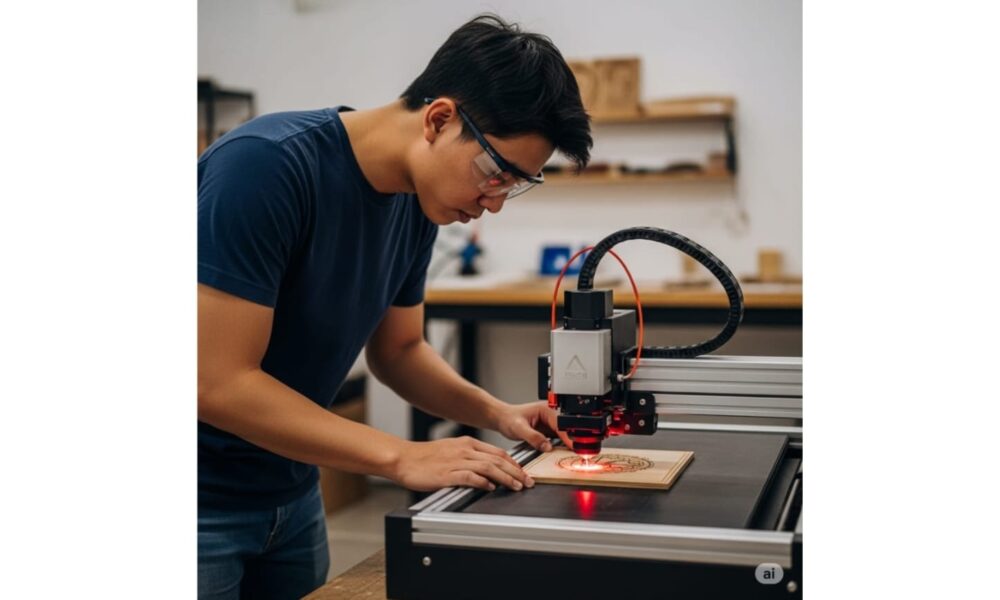For decades, the path from idea to physical product was a formidable one, paved with high costs, international supply chains, and the intimidating specter of mass production. To create something tangible, an entrepreneur needed not just a vision, but also significant capital for tooling, manufacturing contracts, and minimum order quantities. Today, that landscape is undergoing a radical transformation. We are in the midst of a manufacturing revolution, but it isn’t happening in sprawling industrial parks. It’s happening in garages, workshops, and spare rooms. Welcome to the era of the micro-factory.
At the heart of this shift is the democratization of powerful manufacturing technology. Tools that were once the exclusive domain of large corporations—CNC machines, 3D printers, and high-powered laser cutters—have become increasingly accessible, compact, and affordable. This technological leap has shattered the traditional barriers to entry, empowering a new generation of creators, artisans, and entrepreneurs to build viable businesses from their own homes. They are leveraging this technology to bypass mass production entirely, focusing instead on the burgeoning market for customized, on-demand, and locally-made goods.
This isn’t just about hobbyists making trinkets. It’s a fundamental change in e-commerce and small business economics. Platforms like Etsy, Shopify, and Instagram have created global marketplaces for unique products, and consumers are increasingly drawn to items that feel personal and authentic. The successful modern entrepreneur is the one who can rapidly iterate on designs, offer deep customization, and produce high-quality, professional-grade products without holding vast amounts of inventory. This is precisely the niche where desktop manufacturing tools, and specifically CO2 laser cutters, have emerged as the dominant engine of growth.
So, what makes a laser cutter the cornerstone of the modern micro-factory? It comes down to three core strengths: unparalleled versatility, precision, and speed.
Unlike a 3D printer that builds objects layer by layer, or a CNC router that carves material away, a laser cutter uses a focused beam of light to etch, engrave, or slice through materials with surgical precision. This allows for an incredible range of applications across a vast catalog of materials. One moment, an entrepreneur can be engraving custom logos onto glass tumblers for a corporate client. The next, they can be cutting intricate leather patterns for a line of bespoke wallets. Then, they can switch to crafting elaborate, multi-layered wood signage for the wedding industry. This ability to pivot between materials and products with only a digital file change is a game-changer, allowing a single machine to power multiple revenue streams.
The quality of the finished product is what elevates a laser-based business from a hobby to a professional enterprise. The precision of a laser ensures clean cuts and razor-sharp engravings, producing results that are impossible to replicate by hand. This professional finish allows micro-manufacturers to compete on quality, not just price, building a brand reputation that commands premium pricing and fosters customer loyalty.
When you’re running a business, time is money. A laser cutter can produce a complex design in minutes that might take hours or days to create manually. This speed enables entrepreneurs to handle rush orders, manage fluctuating demand, and scale production without hiring a team, keeping their operations lean and their profit margins healthy.
As this movement has gained momentum, several key players have emerged in the hardware space. Companies have recognized the need to bridge the gap between underpowered hobbyist machines and prohibitively expensive industrial equipment. One of the brands at the forefront of this prosumer wave is OMTech. They have carved out a significant market share by engineering machines that deliver industrial-grade power and features at a price point that is within reach for small businesses and serious side-hustlers.
An entrepreneur evaluating a machine like an OMTech laser isn’t just buying a tool; they are making a strategic capital investment. They are looking at the size of the workbed, which dictates the maximum dimensions of their projects. They are analyzing the power of the laser tube (measured in watts), as this determines the speed and thickness of the materials they can cut. Features like passthrough doors, which allow oversized materials like full-length wooden planks to be worked on, become critical for those looking to take on larger, more lucrative commissions like furniture or large-scale art installations.
For aspiring entrepreneurs, the initial hurdle is often the investment. Smart business owners look for every advantage to lower that barrier to entry. Seeking out an omtech discount code or a holiday sale, for instance, can shave hundreds of dollars off the initial purchase, significantly accelerating the timeline to profitability. This savvy financial thinking is just as crucial as the creative vision when launching a successful micro-factory. It’s about minimizing upfront risk to maximize the potential for long-term reward.
The rise of the micro-factory is more than just a technological trend; it’s an economic empowerment movement. It’s about reshoring manufacturing, one small business at a time. It’s about giving creative individuals the power to turn their digital designs into physical profit and build sustainable livelihoods on their own terms. As the technology continues to evolve and become even more accessible, we will undoubtedly see an even greater explosion of innovation, proving that the future of manufacturing isn’t just big; it’s also very, very small.










